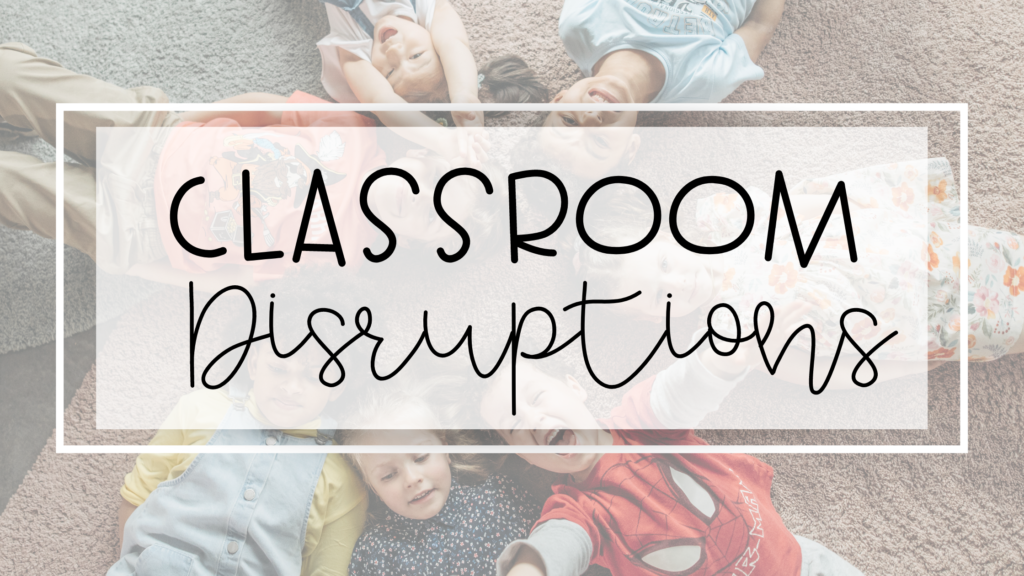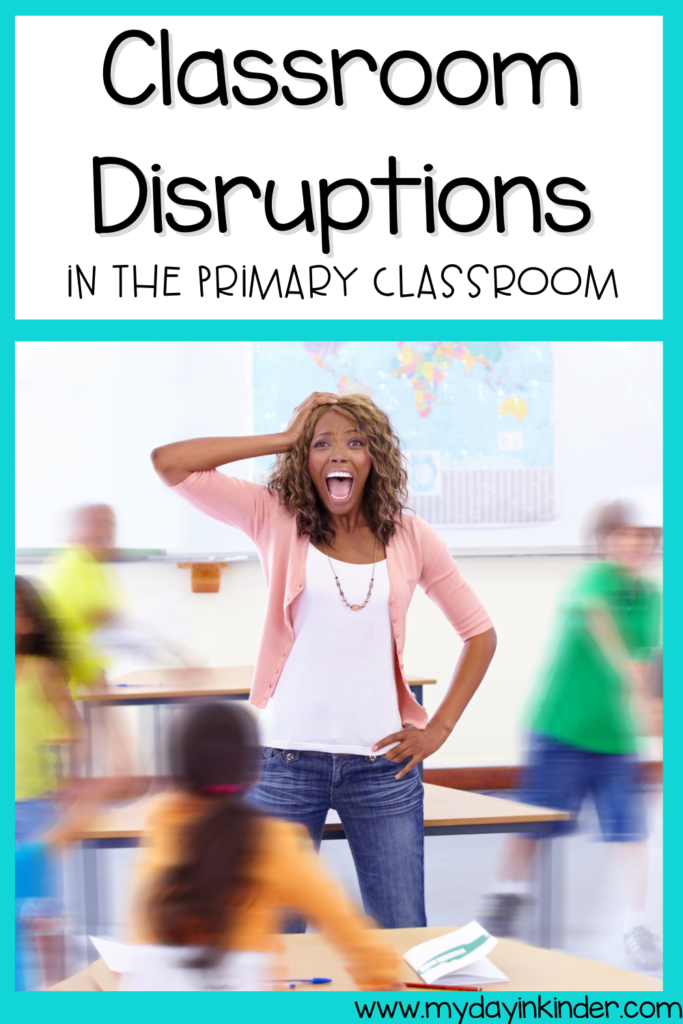Tackling Classroom Disruptions Head-On in the Primary Classroom
Classroom disruptions can turn even the most well-planned lesson into chaos. As teachers, we’ve all experienced those moments when unexpected interruptions suddenly throw off our carefully structured learning environment track. From noisy students to technological glitches, disruptions can disrupt the flow of instruction and hinder student engagement. In this blog post, we’ll explore common classroom disruptions, frustrating signs, management mistakes, fears, and desires teachers face in their daily teaching experiences.

Common Classroom Disruptions
Picture this: You’re in the middle of a lively lesson about the solar system, and suddenly, a loud noise from the hallway disrupts the flow of conversation. As you try to regain your students’ attention, you notice that some fidget with their pencils while others whisper to their neighbors. Classroom disruptions like these are a common challenge for educators, often making maintaining focus and momentum during lessons difficult. Here are some of the most common disruptions teachers encounter.
- Talkative Students: Some students may struggle to maintain appropriate volume levels during group activities or independent work, leading to distractions for themselves and their peers.
- Off-Task Behavior: Students may become distracted by personal items, technology, or conversations with classmates, diverting their attention away from the lesson.

- Technological Issues: Glitches with classroom technology such as projectors, computers, or interactive whiteboards can disrupt instruction flow. This can cause frustration for teachers and students.
- Unannounced Visitors: Unexpected visitors, whether they are administrators, parents, or other staff members, can disrupt the learning environment. It can quickly shift the focus away from the lesson.
- Medical Emergencies: Health-related issues such as sudden illnesses or injuries among students require immediate attention and can interrupt learning.
All of these distractions (especially the top two) can really hinder the learning process. When students are distracted, they do not absorb the information you are teaching. This can cause students to struggle when working in partners, independently, or when asked to show what they have learned on a test or quiz.
Classroom Disruption Fears
The fear of losing valuable teaching time, not regaining students’ attention after interruptions, and disruptions affecting classroom morale are valid concerns for educators. These fears can impact confidence and hinder effective classroom management strategies.
When valuable teaching time is lost due to disruptions, teachers may struggle to cover important material and meet learning objectives, leading to frustration and stress.
Additionally, the challenge of regaining students’ focus after interruptions can disrupt the flow of the lesson and diminish overall student engagement.

Furthermore, disruptions that affect classroom morale can create a negative atmosphere, impacting student motivation and teacher morale alike. It’s essential for teachers to really look at these concerns proactively and implement strategies to minimize disruptions, maintain student engagement, and foster a positive learning environment.
Common Classroom Management Mistakes
Navigating a classroom full of energetic students while keeping disruptions at bay is no easy feat. However, we sometimes inadvertently make common classroom management mistakes that exacerbate these disruptions. Whether it’s failing to establish clear expectations or responding inconsistently to disruptions, these mistakes can hinder our ability to create a classroom environment where students are focused and ready to learn.
- Lack of Proactive Measures: Failing to establish clear expectations and routines from the beginning can lead to increased disruptions as students may not know how to behave appropriately.
- Inconsistent Response: Responding differently to similar disruptions can confuse students and undermine the effectiveness of classroom management strategies.
- Ignoring Engaging Lesson Plans: Neglecting to incorporate interactive and engaging lesson plans can contribute to student disengagement and increase the likelihood of disruptions.
Classroom Management Desires
Every teacher desires a smoothly flowing lesson that increases student focus and participation. Achieving a positive and uninterrupted teaching experience is the ultimate goal. This allows teachers to create an optimal learning environment for their students.
Ways to Help with Class Disruptions
Navigating classroom disruptions is like a right of passage during every teacher’s journey. Teachers face various challenges in maintaining a classroom, whether it’s a burst of energy during a lesson or unexpected interruptions. These practical strategies will help with classroom disruptions and promote a positive and engaging atmosphere for teachers and students.
- Establish Clear Expectations: Set clear guidelines for behavior and participation from the beginning of the school year. Communicate these expectations to students and consistently reinforce them throughout the academic term. When students understand what is expected of them, they are more likely to adhere to classroom rules and minimize disruptions.
- Implement Routines and Procedures: Establishing consistent routines for common classroom activities, such as transitions between lessons can help reduce disruptions. Clearly outline these procedures and practice them regularly to ensure smooth transitions and minimize interruptions.
- Use Positive Reinforcement: Recognize and praise students for positive behavior and active class participation. Positive reinforcement can help motivate students to stay on task and follow classroom expectations, ultimately reducing the likelihood of disruptions.

- Address Disruptions Promptly: When disruptions occur, address them promptly and calmly. Provide clear reminders of classroom expectations and redirect students back to the task at hand. By addressing disruptions in a timely manner, you can prevent them from escalating and maintain a focused learning environment.
- Encourage Student Engagement: Keep students actively engaged in the learning process by incorporating interactive and hands-on activities into your lessons. Engaging lessons capture students’ interest and attention, making them less likely to become disruptive.
- Build Relationships: Foster positive relationships with your students based on trust and respect. When students feel valued and supported, they are more likely to cooperate and adhere to classroom expectations. This obviously helps reduce the occurrence of disruptions.
- Collaborate with Colleagues: Work collaboratively with fellow educators to share strategies and best practices for managing classroom disruptions. Collaborative problem-solving can help generate new ideas and approaches for maintaining a positive and productive learning environment.
Classroom Disruptions, No More!
In navigating classroom disruptions, it’s essential to acknowledge the challenges, learn from mistakes, address fears, and strive toward fulfilling management desires. Teachers can minimize disruptions and create a conducive learning environment by implementing proactive strategies and fostering a positive classroom culture.

